Illustration | 90 plants suitable for flower borders
Original title: Illustration | 90 kinds of plants suitable for flower borders
1. Torch Flower
Morphological characteristics :Torch Lotus is a perennial herbaceous plant of the genus Torch Lotus in the Liliaceae family, with a height of 80-120 cm. The stem is erect. The leaves are linear. The racemes are borne with hundreds of small cylindrical flowers in the shape of torches, and the corolla is orange-red. The flowering period is June-July. The capsule is yellow-brown and the fruiting period is September.
Growth habit :
Torch Flower likes warm, humid and sunny environment, and can tolerate partial shade. It requires deep, fertile and well-drained sandy loam. It likes warm and sunny environment and is suitable for growing in loose and fertile sandy loam. It is relatively cold-resistant.
It is native to southern Africa and is relatively cold-resistant, and can survive the winter in the open field in the middle and lower reaches of the Yangtze River.
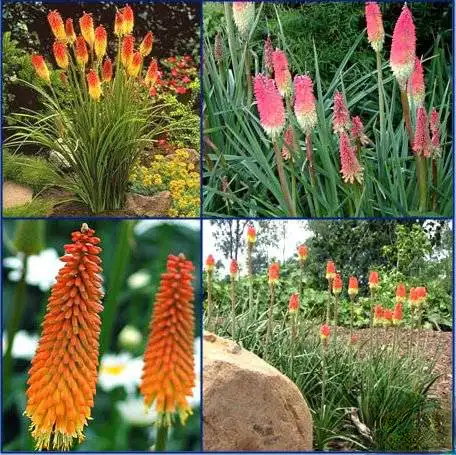
2. Purple Flower
Morphological characteristics
Bulbous flower, plant height 30-50 cm, with cylindrical bulblets, plant in clusters. The stems and leaves have a leek flavor. The terminal cymes have small purple-pink flowers.
Growth habit
It likes high temperatures, and the suitable temperature for growth is 24 to 30 degrees Celsius.

3. Thyme
Thyme's form
Thymus is a genus of about 350 species of perennial aromatic herbs in the family Lamiaceae. They are up to 40 cm tall and grow in Europe, North Africa and Asia.
Generally, it is an evergreen plant with narrow stems. The leaflets ( 4-20 mm long) are opposite, entire, and oval. The flowers are clustered at the top; the calyx is irregular: the upper edge is divided into three petals, and the lower edge is split; the corolla is tubular, 4-10 mm long, and white, pink or purple. It is a perennial herb. The seed germination time is 12-20 days, the maturity time is 90-10 days, and the flowering period is summer.
Origin of thyme
North Africa, Europe and temperate Asia, mostly produced in the area north of the Yellow River, especially in the northwest.
Origin: France, Spain, Mediterranean countries and Egypt
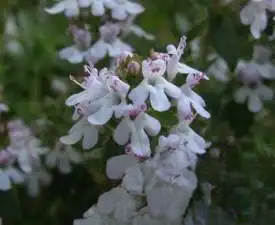
4. Golden Thyme
Biological learning:
It is a perennial evergreen subshrub. It grows as a perennial root in cold northern regions. It is suitable for warm climates, avoids strong sunlight, and requires well-drained calcareous soil. In Greek, it means courage and can be offered to gods.
use:
Greening, edible, potted ornamental or ground cover plants, the whole plant contains aromatic volatile oils, which can be used to extract essences or for medicinal purposes, and can be used as an auxiliary ingredient for tea. It can eliminate gastrointestinal bloating, soothe the digestive system, promote diuresis, expel roundworms, prevent virus invasion, and has a youthful effect.
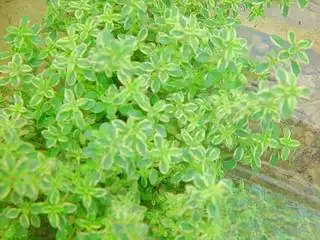
5. Silver Thyme
Thymus is an evergreen herb in the Lamiaceae family . The leaves have silvery white edges and the rest are the same as thyme.
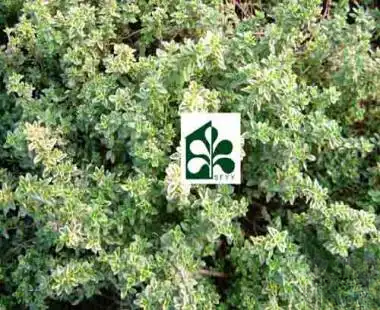
6. Mint
Lamiaceae, mint genus. Perennial herb, aromatic plant. Plant height 30cm , opposite leaves, oval to round, dark green, with wide milky white spots on the leaf margins. Pink flowers , flowering from July to September . Likes light and moisture, cold-resistant
Lamiaceae, mint genus.

7. Mint
Mint is the above-ground part of the perennial herbaceous plant Mentha of the Labiatae family . It is an aromatic crop with special economic value.
The main producing area is the United States, and the best mint comes from the United Kingdom. The stem is about 90 cm long, with hairy serrated leaves and terminal flowers with purple, white and pink flower spikes. Mint likes to grow in humid climates.
Mint likes a warm, humid environment with plenty of sunshine and rainfall. The rhizome can germinate at 5-6 ℃, and the optimal growth temperature for the plant is 20-30 ℃ . It has strong cold resistance.
The soil for growing mint is preferably loose, fertile, well-drained sandy soil.
Water has a great influence on the growth and development of mint. The plant requires more water in the early and middle stages of growth. The bud and flowering stages require sunny and dry weather, and require less water.
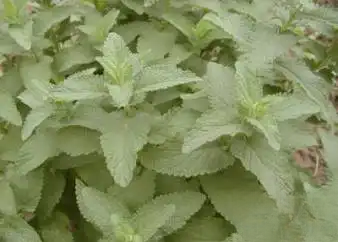
8. Flower-leaf activating blood stasis dan
Family : Lamiaceae
Category : Evergreen vine
Main characteristics : thin branches, small kidney-shaped leaves, white spots on leaf edges, turning slightly red after frost in winter.
Habit characteristics : fast-growing, drooping up to 1.5M . Shade-tolerant, likes moisture, relatively cold-resistant, it is better to overwinter indoors in East China.
Application : Suitable for hanging viewing or planting as ground cover plant.

9. Huoxuedan
Creeping herb. Thin stem, hairy. Leaves are kidney-shaped to round-shaped, 1.5-3 cm long , 1.5-5.5 cm wide , hairy or nearly hairless on both sides, with glandular dots on the back. Bracts are nearly as long as or longer than the pedicel, thorn-shaped; calyx is 7-10 mm long , calyx teeth are narrowly triangular-lanceolate, awn-shaped at the top, with hairs and glandular dots on the outside; corolla is light blue to purple, 1.7-2.2 cm long . Nutlets are oblong, about 2 mm long , brown. Flowering and fruiting period is April to June .
It is commonly found everywhere, growing in relatively shady and moist wastelands, under forests on hillsides and on roadsides. It is produced throughout the country except in the northwest and Inner Mongolia.
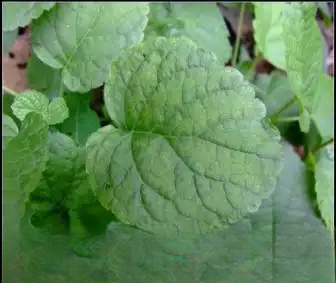
10. Patchouli
Patchouli, also known as the native patchouli, is native to China. It likes a warm, humid and sunny environment. The above-ground part is not cold-resistant, afraid of dryness and waterlogging. It is not strict with the soil and prefers loose, fertile and well-drained sandy loam.
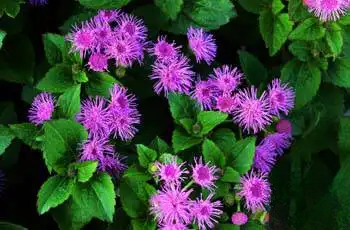
11. Oregano
Morphological characteristics
An evergreen perennial herb with lush growth, growing to a height of 25 cm. The leaves turn dark red in autumn and winter.
Growth habit
It likes light, tolerates barrenness, and should be planted in a well-drained place. It likes alkaline soil and is a good ground cover plant.
Origin Distribution
Originated in northern Africa and Asia , the distribution of oregano is affected by the geographical environment. Europe, northern Africa and Asia can produce a certain amount of oregano. In China, oregano is mainly distributed in North China, Northwest China and south of the Yangtze River.
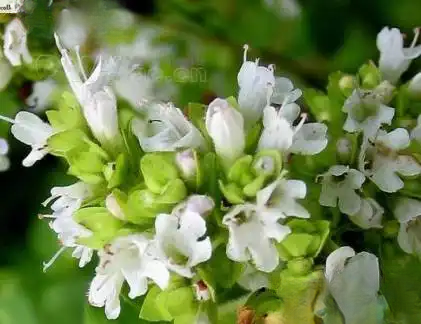
12. Nepeta
It is mainly produced in Jiangsu, Zhejiang and Jiangxi provinces, and is mostly cultivated artificially.
Nepeta is also known as catnip. Because it has an exciting and hallucinogenic effect on 2/3 of cats. But it has no effect on humans, is harmless to cats, and is not addictive. Large pet stores have strictly made catnip toys that can be used as pet toys for cats. See the catnip entry.
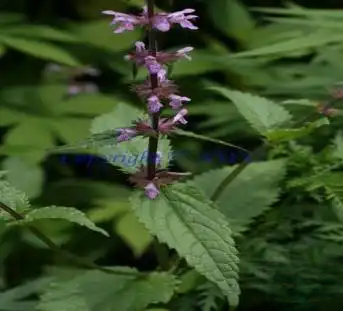
13. Sky Blue Sage
Family: Lamiaceae Salvia
Scientific Name: Salvia uliginosa
Habits and uses: Perennial herb; sky blue flowers, flowering plants up to 1.5 meters tall , flowering in spring; light-loving, highly adaptable; suitable as background material for flower borders. Sky blue sage is an ornamental plant .
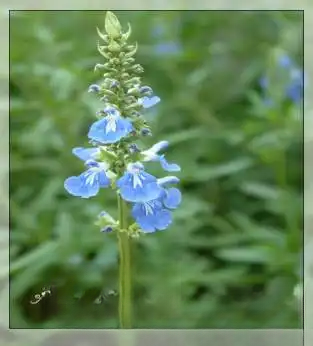
14. Dark Blue Sage
Dark blue sage is a perennial herbaceous plant of the genus Salvia in the family Lamiaceae. It has a tall plant shape, oval leaves, and dark blue flowers.
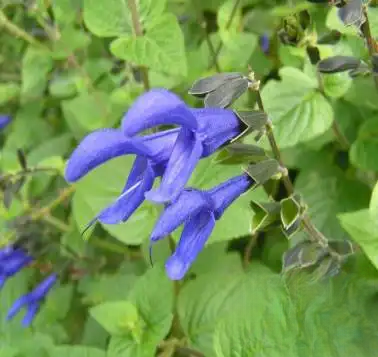
15. Purple Sage
Salvia is a perennial herb in the Lamiaceae family . The plant is purple-red all year round. It likes light and has strong adaptability. It is suitable for color matching in flower mirrors and flower beds.
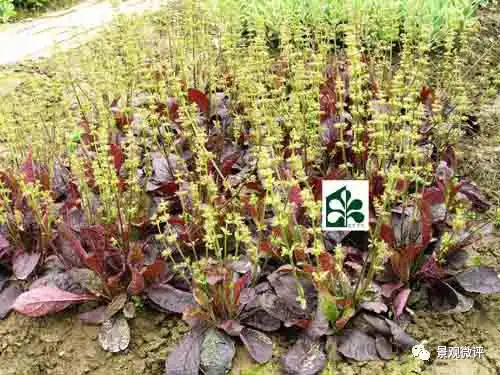
16. Stachys lindens
Distribution: Origin: Balkan Peninsula, Black Sea coast to West Asia. Type specimens were collected from Greece.
Morphological characteristics: perennial herbaceous flower. Plant height 35 cm to 40 cm, crown width 45 cm to 50 cm; silver-gray leaves are soft and textured;
Growth habit: light-loving, cold-resistant. The lowest temperature it can withstand is -29℃ .
Garden uses: flower borders, rock gardens, garden ornamental. Often cultivated as an ornamental plant in flower beds.
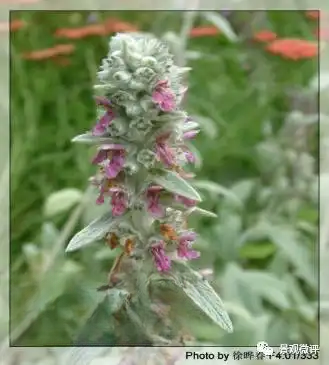
17. Pink Flower Spice
Pink flower spice, perennial evergreen herb of Lamiaceae, flowering in spring.
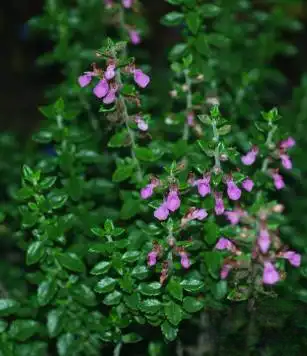
18. Sesame
Identification characteristics: Perennial herb, up to 1m tall; rhizomes with underground creepers. Stems are single, quadrangular, shallowly grooved, and almost glabrous. Leaves are opposite, papery, ovate, ovate-lanceolate, or heart-shaped, 4.5-8.5cm long, 3.5-5cm wide, with a caudal tip and a heart-shaped base, with tooth-like serrations on the margins and small cusps on the tips.
Growth habits: Distributed in Northeast China, North China, East China, Central China, Sichuan, Guizhou and other places, growing on shady and moist roadsides, at the foot of mountains or under forests.
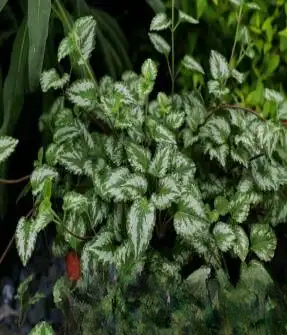
19. Euphorbia pulcherrima
An evergreen perennial herb. Elderberry. The leaves are long and narrow, and the inflorescence is like a peacock spreading its feathers, very beautiful .
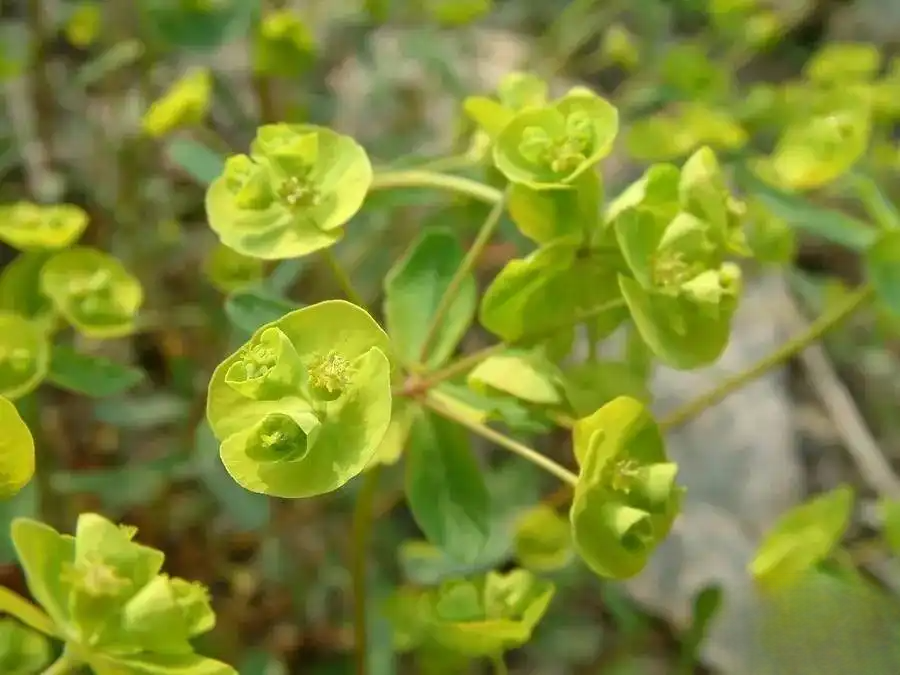
20. Purple Clover
It can overwinter in the open field in South China, and can also be cultivated in the open field in the Yangtze River Basin as long as it is slightly protected from cold. It is mostly used as a potted plant for viewing in the areas north of the Huaihe River. It is a perennial herb with bulbs, and prefers a warm, humid and semi-shady environment. It is relatively resistant to low temperatures, but afraid of severe cold; relatively tolerant to shade, and avoids scorching sun; relatively resistant to drought, but afraid of stagnant water; it likes fertility and cannot tolerate barrenness. Whether it is potted or planted in the ground, loose, fertile, well-drained sandy soil is preferred. The flowering period is from May to November .
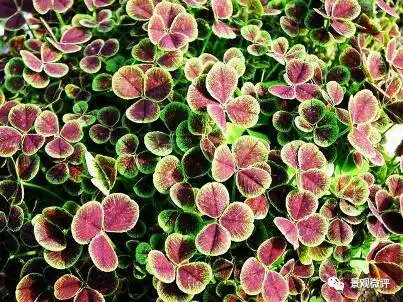
21. Tiger ear grass
Distributed in East China , South-Central China , Southwest China and Japan . Leaves grow in bundles from the root, green on the surface, red on the back and petiole, heart-shaped and round, with long petiole, wavy edges with blunt teeth. Panicle. Flowers are small, white, with purple or yellow spots. Flowering period is April-May . There is a variegated variant ( var.variegata) with smaller leaves, irregular white, pink, and red spots on the leaf margins, which is rare and precious.It likes semi-shade, cool, high humidity and good drainage. It is not resistant to high temperatures , and it goes dormant in the hot summer and autumn, and resumes growth in autumn .
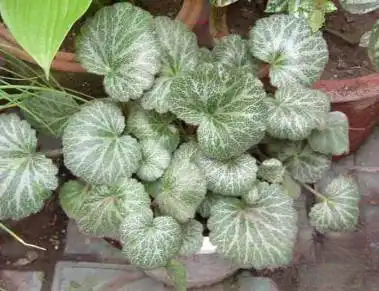
22. Phlox fasciata
It is a perennial evergreen cold-resistant perennial herbaceous flower with purple, white, pink, etc. The old stem is semi-woody, the plant height is 8-10 cm , the branches and leaves are dense, and it grows on the ground. The leaves are needle-shaped, clustered, leathery, about 1.3 cm long, bright green in spring, dark green in summer and autumn, and gray-green after frost in winter. The leaves and flowers bloom at the same time . The clustered phlox is highly valued in the gardening industry. It not only has a high coverage rate and strong ornamental value, but is also an excellent ground cover flower. It is also easy to plant, has strong adaptability, and is drought-resistant, cold-resistant, and salt-alkali soil-resistant.
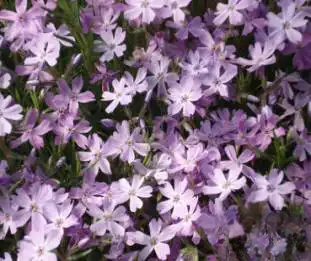
23. Mallow
Species name: Malva sibiricum Also known as: Poppy Mallow
Morphological characteristics :
Malvaceae, genus Papaver, perennial herb with a white, thick taproot. The creeping stem is 60 to 90 cm long and hairy. The leaves are alternate and 5 to 7 deeply lobed. The flower is 6 cm in diameter , purple-red, and blooms in summer.
Growth habit :
It is native to Texas and Mexico. It likes warmth and plenty of sunshine, grows well in well-drained and fertile soil, and avoids high temperature and waterlogging.
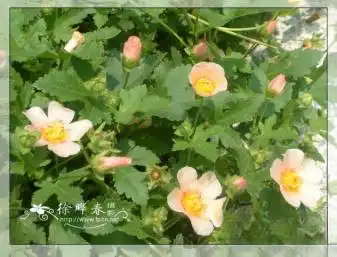
24. Sedum truncatum
Growth habit:
It likes strong light and dry, well-ventilated environment, and can tolerate low temperature of -20 ℃ ; it likes well-drained soil, tolerates barrenness and drought, and avoids rain and waterlogging. The plant is strong and requires extensive management.
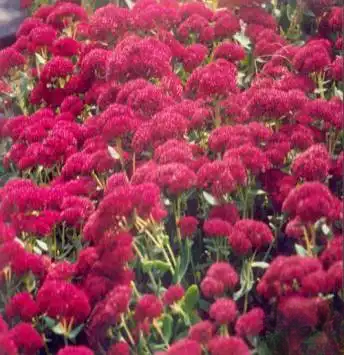
25. Golden mugwort
Morphological characteristics: The leaves have yellow spots and emit a fragrant smell
Family : Asteraceae perennial herb
Uses : The leaves are bitter and pungent, warm in nature, and have the effects of warming the uterus and stabilizing pregnancy, regulating menstruation and stopping bleeding, dispelling cold and removing dampness. It is a traditional and commonly used Chinese herbal medicine and can prevent many diseases.
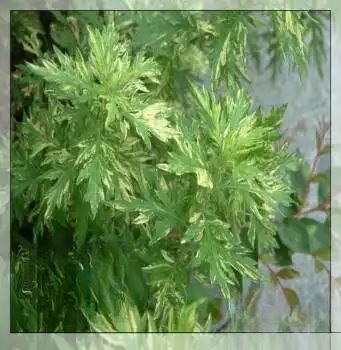
26. Coreopsis grandiflora
Growth habit : It is not demanding on soil, prefers fertile, moist and well-drained sandy loam, drought-resistant, cold-resistant and heat-resistant. Morphological characteristics : Perennial herb, plant height 30 to 60cm . Stem erect and branched. Basal leaves and some lower stem leaves are lanceolate or spoon-shaped; stem leaves are all or sometimes 3 to 5- lobed, lobes are lanceolate or strip-shaped, and the tip is obtuse. Capitulate inflorescence, 4 to 7.5cm in diameter , with long petioles, one round of ligulate flowers on the edge , and the others are tubular flowers . There are usually 8 ligulate flowers , yellow, and three-lobed at the top; horticultural varieties have double petals (that is, multiple rounds of ligulate flowers). Achenes are round with broad and thin membranous wings.
Flowering period is from June to August .
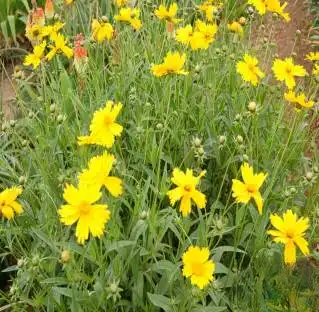
27. Double Coreopsis
Coreopsis is an evergreen herb in the Asteraceae family . Its flowers are double, yellow, and red. The taller ones are shorter than the large-flowered Coreopsis; the rest are the same as the large-flowered Coreopsis.
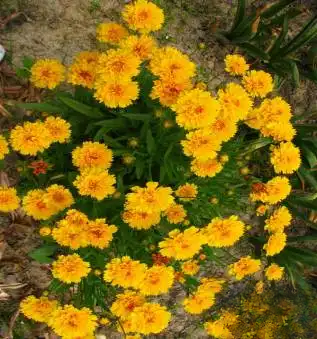
28. Shasta daisy
Morphological characteristics:
Perennial herb with stem height of 40 to 100 cm. Basal leaves are oblanceolate with long petioles, and stem leaves are sessile and linear. The capitula is solitary at the top of the stem, with white ligulate flowers and fragrance; tubular flowers are bisexual and yellow. Flowering period is June to July ; achenes, fruit ripening period is August to September .
Growth habit:
It likes sunlight and its suitable growth temperature is 15 to 30 ℃ . It is not picky about soil and can grow in garden soil, sandy loam, slightly alkaline or slightly acidic soil.
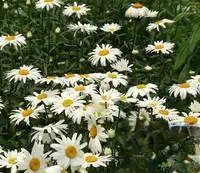
29. Rudbeckia
Morphological characteristics: Annual or perennial herb, pinnate leaves with fine cracks, white flowers with yellow center, blooms in summer. The whole plant has fragrance, and the leaves have a slight grassy and apple aroma.
Growth habits: likes sunlight, well-drained sandy loam or deep soil, neutral or slightly alkaline soil
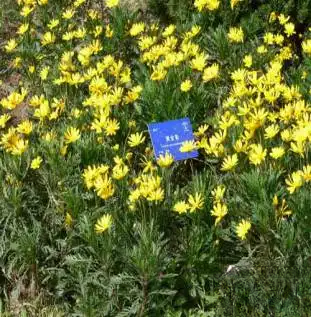
30. Artemisia selengensis
Family: Asteraceae, Artemisia
Habits and uses: Perennial herb; resistant to pruning, with strong sprouting ability; likes light, and dislikes hot and rainy summers; can be used in perennial flower beds, flower borders or forest edges.
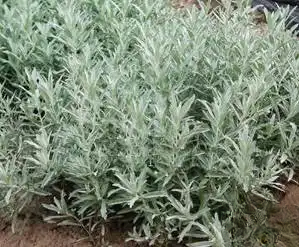
31. Rudbeckia
Origin and Habits : Mainly produced in North America, it is a perennial herb , mostly cultivated as a biennial. It is both cold-resistant and drought-resistant. It prefers a sunny and ventilated environment. It has a self-sowing habit. It can be cultivated in general soil. The flowering period is from May to September .
Morphological characteristics : The branches and leaves are rough, and the whole plant is hairy. The leaves are near the roots, and the upper leaves are alternate. The leaves are spoon-shaped and broadly lanceolate, and the leaf margins have coarse teeth. The inflorescence is capitulate . The ligulate flowers are single whorl, golden yellow; the tubular flowers are dark brown and hemispherical.
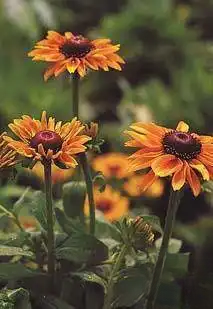
32. Golden Plate Achillea Millefolium
Ecological habits: Perennial semi-evergreen ground cover, not tolerant to water and humidity, umbel inflorescence, yellow flowers, up to 80cm tall when flowering .
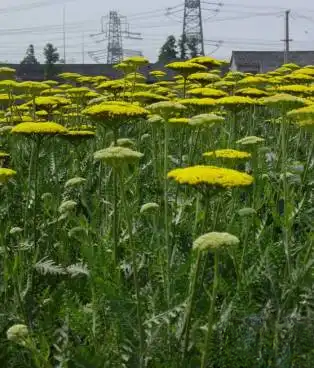
33. Achillea millefolium
Growth habit:
It is not demanding on soil and climate conditions, is very tolerant to thin ridges, and can grow well in semi-shaded places; it is drought-tolerant, especially in summer when it requires less water, and is a " water-saving plant " in urban greening . If there is too much water, it will cause excessive growth and the plant will be too high. If there is water accumulation, it will cause root rot. Therefore, the soil drainage conditions must be good.
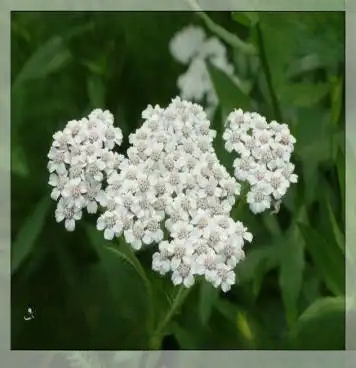
34. Perennial chrysanthemum
Ecological habits : It is strong, heat-resistant and drought-resistant. It likes a sunny, well-ventilated environment and well-drained soil. In moist and fertile soil, it has few flowers and many leaves and is prone to die.
Morphological characteristics : Perennial herb, plant height 50 to 90cm , the whole plant is densely covered with coarse and stiff hairs. Leaves are alternate, entire to wavy pinnate. The head inflorescence is solitary at the top of the stem, 5 to 7cm in diameter , the ligulate flowers are yellow at the top and purple at the base; the tubular flowers are purple-brown. Achenes are all densely hairy.
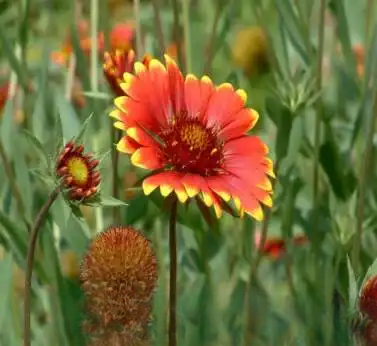
35. Asian chrysanthemum
Morphological characteristics: Evergreen subshrub, growing in clusters. The leaf margins are silvery white, and golden yellow flowers bloom in large quantities in late autumn. Origin: Native to the former Soviet Union and North Korea.
Ecological habits: Strong adaptability, heat resistance, and relatively cold resistance. It can overwinter in the open field in Shanghai.
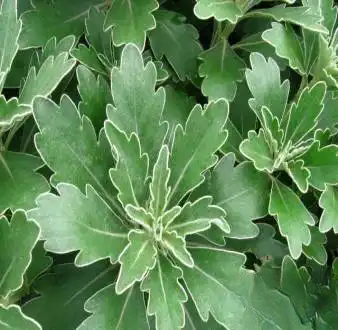
36. Silver chrysanthemum
Plant morphology : Evergreen perennial herb, dense branches and leaves, soft new shoots, grayish-white soft hairs, silver-gray leaves and yellow flowers. It likes light, heat-resistant, and avoids waterlogging. The leaves are light green in shade and humid environments. The flowers are yellow, like buttons, and the flowering period is June-July . It is drought-resistant, barren-resistant, heat-resistant, pruning-resistant, and fragrant. Its unique leaf color can also bring a cool feeling to the hot summer.
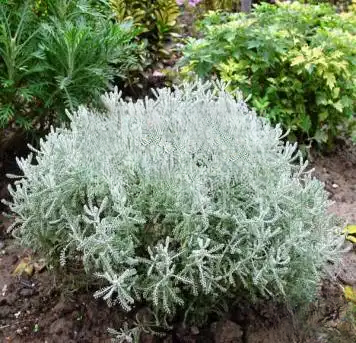
37. Chrysanthemum
Family: Asteraceae
Habits and uses: Perennial herb, semi-evergreen, flowering period from August to October . Light-loving, cold-resistant, drought-tolerant, soil drainage must be good. Suitable for arranging flower borders and flower beds, and can also be potted for viewing.
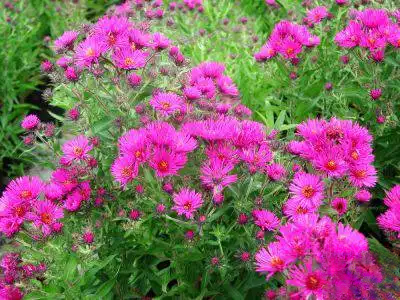
38. Purple chrysanthemum
Aster is a perennial herb in the Asteraceae family . It has purple flowers and blooms in summer. The plant height is 50-60 cm. It is cold-resistant and drought-resistant and requires good soil drainage. It is suitable for arranging flower mirrors and flower beds. Perennial herb
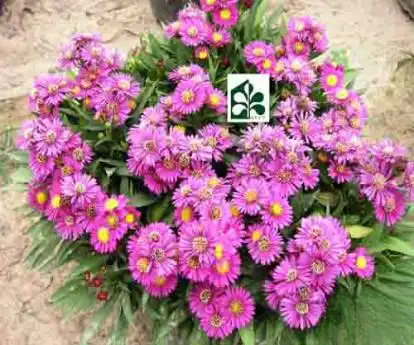
39. Echinacea
Family and genus: Echinacea, Asteraceae, perennial herb, 60-150cm tall , with coarse hairs all over the plant, and erect stems; basal leaves are ovate or triangular, and stem leaves are ovate-lanceolate, with petioles slightly clasping the stem at the base; capitula are solitary at the top of branches, or several or more are clustered, with a flower diameter of up to 10cm , ligulate flowers are purple-red, and tubular flowers are orange-yellow. Flowering period is June-July .
Distribution and habits: Distributed in North America and cultivated all over the world, slightly cold-resistant, prefers to grow in warm and sunny places, and prefers fertile, deep, organic-rich soil.
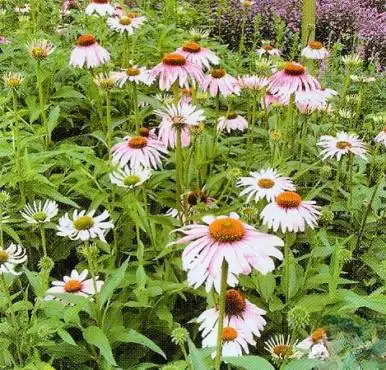
40. Chishan Powder
Morphological characteristics: Perennial herb, 50 cm tall, plant clumping, young plant branches, petioles and leaf midribs are purple-red in spring, mature leaves are green in summer, with rust-red halo in the center, leaf margins are light purple-red, capitulate inflorescence, often grown individually at the top of the stem, with pink or white flowers on top. The flowering period is July-August , and black oval achenes are produced after flowering.
Growth habits: It likes light but is also shade-tolerant, cold-resistant and barren-resistant.
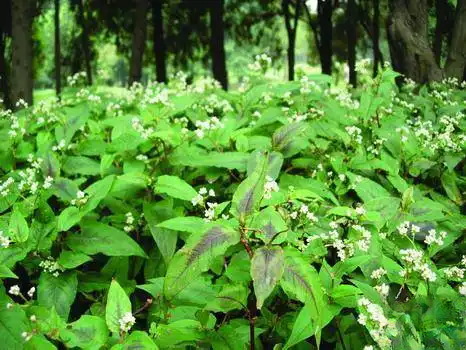
41. Aspidistra
Growth habits: It likes warm, shade and humid environment, can tolerate barrenness, not cold-resistant, extremely shade-tolerant, and likes loose, fertile, well-drained sandy loam.
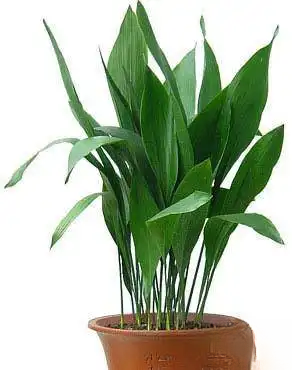
42. Beautiful Evening Primrose
Growth habits: Strong adaptability, acid and drought resistance, not strict on soil requirements, generally neutral, slightly alkaline or slightly acidic loose soil can grow. But if the soil is too wet, the roots are prone to disease
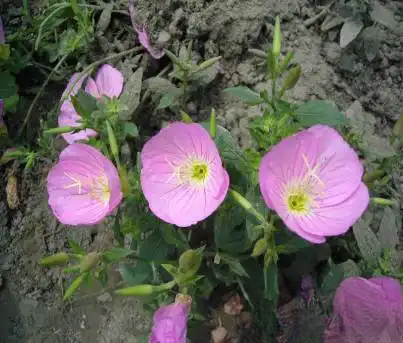
43. Willow Saddle Grass
Growth habits: Verbena likes warm climate, the suitable growth temperature is 20~30℃ , it is not cold-resistant, and grows slowly below 10℃ . It grows best in full-sun environment. If cultivated in an environment with insufficient sunlight, it will grow poorly. It can bloom all year round, with a long flowering period and high ornamental value. It blooms better in spring, summer and autumn, and poorly or not in winter. It is not picky about soil selection, as long as it has good drainage. It has strong drought resistance and moderate water requirement.
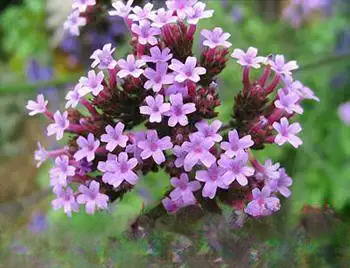
44. Perennial Verbena
Ecological habits :Originally from Brazil and Uruguay in South America, it is now distributed in a few areas. It likes warm and humid climates and has a certain degree of cold resistance. It likes plenty of sunlight and cannot tolerate shade. It is not very demanding on soil, but it likes fertile loam. It rarely blooms in poor soil. The flowering period is from May to October , and most of them are cross-pollinated.
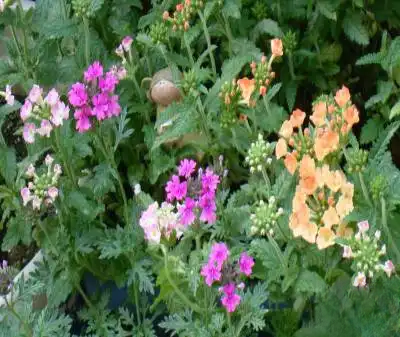
45. Houttuynia cordata
Habitat distribution :
Ecological environment: grows near ditches, streams and under moist sparse woods.
Resource distribution: Distributed in Shaanxi, Gansu and areas south of the Yangtze River Basin.
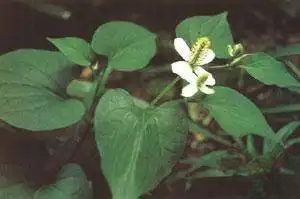
46. Purple-leaved Duck Celery
Plant characteristics: The suitable growth temperature of duck celery is the daily average temperature of 10-25 ℃. Its plant height growth and the growth rate of new leaves at the base are both fast, but it is not resistant to high temperatures. The growth slows down significantly above 25 ℃. When it is above 30 ℃, the lower leaves begin to turn yellow, but it is relatively resistant to low temperatures. Duck celery has low requirements for light intensity. The light compensation point and light saturation point are about 1000lx and 20000lx respectively , which is only 1/2 of celery . However, under low temperature conditions, excessive light has no adverse effect on it; when high temperature is accompanied by strong light, the plant is prone to yellowing. Duck celery is not strict with soil requirements and is suitable for growing in fertile soil, rich in organic matter, loose structure, good ventilation, moist environment, and slightly acidic sandy loam.
Growth and distribution: It grows in the shade and wet places under the forest. It is distributed in provinces south of the Yangtze River , and also in North Korea, Japan, and Russia .
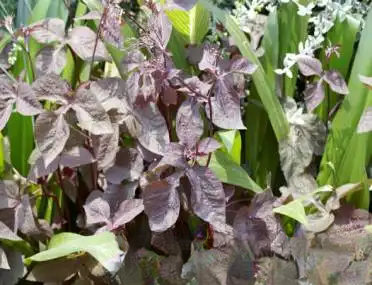
47. Ground Cover Dianthus
Dianthus is extremely drought-tolerant, and natural rainfall can meet its water needs, so in terms of water management, we should follow the principle of preferring dryness to wetness. As long as it is not dying from drought, do not water it. Most areas suffer from spring drought, so watering in spring is very beneficial to the growth and flowering of ground cover dianthus.
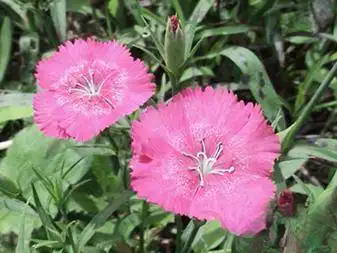
48. Silver-edged Acorus calamus
Acorus calamus is an evergreen herb of the Araceae family with linear leaves and silvery-white stripes. It prefers shady and humid environments and is suitable for planting in shallow water, as ground cover, or as a flower mirror.
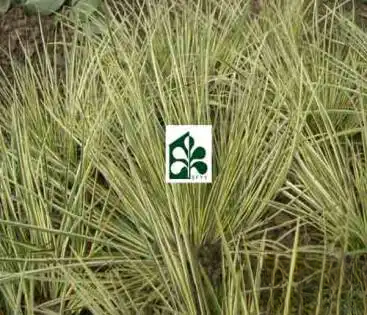
49. Acorus calamus
Characteristics: Evergreen herb, the whole plant has fragrance. Plant height 20-40cm , leaves are striped, with yellow stripes, tough and shiny. Spadix inflorescence, yellow-green. Flowering period is April-May .
Living habits: likes shady and humid environment, slightly cold-resistant. Strong adaptability and strong growth.
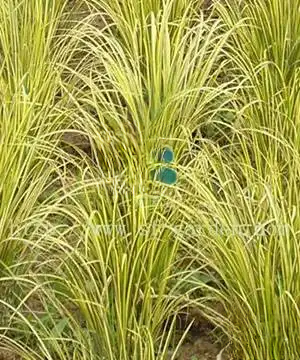
50. Willow of the Assumption
Morphological characteristics: Perennial herb, cultivated as an annual, 50 cm tall, the whole plant is covered with pubescence. Growing in clusters, with erect stems. Leaves are alternate, lanceolate. Flowers are solitary or 3 to 4 flowers grow in the axils of leaves and on the peduncle, forming a terminal conical inflorescence, with tube-shaped flowers and multiple colors such as red, purple, and white. Flowering period is from May to October .
Distribution: Native to Mexico, cultivated.
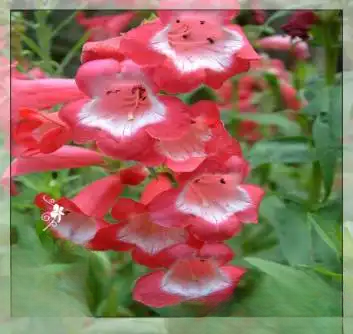
51. Fake faucet
Living habits: It likes loose, fertile, well-drained sandy loam. It grows poorly in dry summer. Flowering period is from July to September . The plant grows in clusters, and the blooming spikes sway in the wind, graceful and charming. It is strong in nature, and the underground creepers are easy to produce seedlings. After planting one plant, it often reproduces countless young plants by itself.
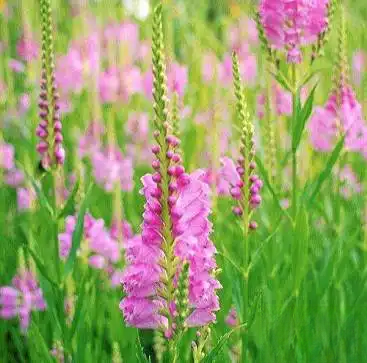
52. Veronica paniculata
Morphological characteristics : Scrophulariaceae, Veronica genus, perennial cold-resistant herb, plant height about 45cm . Leaves are opposite, lanceolate to ovate, nearly sessile, 5 to 20cm long , with serrations. Flowers are blue or pink; florets are 4 to 6mm in diameter , forming a compact terminal raceme, flowering period is June to August .
Growth habit:It grows naturally on calcareous meadows and gravelly mountains. It likes light and tolerates partial shade. It can grow well on all kinds of soils, but avoids waterlogging in the soil in winter.
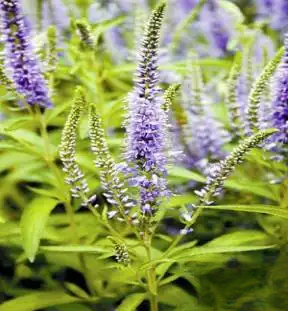
53. Tradescantia
Morphological characteristics: Perennial herb, up to 30-50 cm tall, with erect, cylindrical, pale green, smooth stems, broad linear leaves, pale green, slightly covered with white powder, mostly curved, inward-folded, sheath-like base, blue-purple flowers clustered at the top of branches, covered with 2 bracts of varying lengths, about 2-3 cm in diameter, 3 sepals , green, 6 stamens , filaments hairy and rosary-like, flowering period May-July , with a single flower blooming for only 1 day.
Distribution and Habits : Native to North America, it is widely cultivated. It likes sufficient sunshine, but can also tolerate partial shade. Tradescantia is strong and cold-resistant, and can overwinter in the open field in North China. It is not strict with soil requirements.

54. Martian Flower
Living habits : likes plenty of sunshine and is cold-resistant. In the middle and lower reaches of the Yangtze River, the bulbs can survive the winter in the open field. It is suitable for growing in well-drained, loose and fertile sandy loam, and requires sufficient moisture in the soil during the growth period.
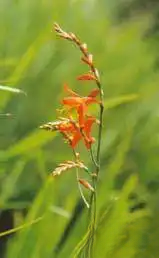
55. Iris
Native to Central Asia and Korea, it is also distributed wild. It is salt-alkali tolerant and trample-resistant, with a well-developed root system. It grows on wasteland roadsides, hillside grasses, and saline-alkali meadows. It can be used for soil and water conservation, transformation of saline-alkali land and industrial wasteland, and ground cover, edging, or solitary planting in gardening. The whole plant is used as medicine, which has the effects of clearing heat, stopping bleeding, and detoxifying. The leaves can be used as materials for tying and weaving.

56. Rosemary
Living habits : Rosemary likes warm climates, but it grows slowly during the high temperature period in Taiwan's plains. The temperature without cold currents in winter is more suitable for its growth. In terms of water supply, since rosemary leaves are leathery and more drought-resistant, the soil rich in sand and with good drainage is more conducive to its growth and development. It is worth noting that rosemary grows slowly, which also means that its regeneration ability is not strong. Special care must be taken when pruning and harvesting, especially old branches become lignified very quickly. Excessive pruning often prevents the plant from sprouting again. A safer approach is not to cut more than half of the branch length each time.
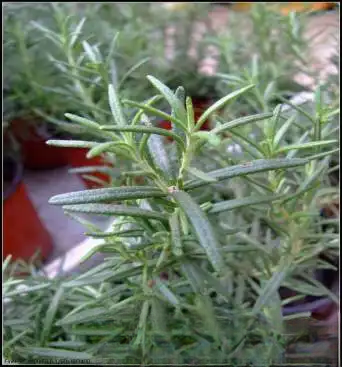
57. Creeping Rosemary
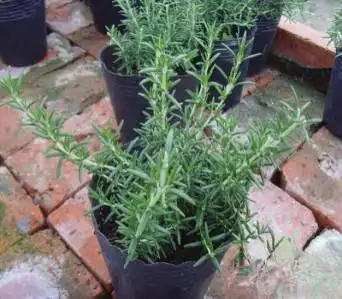
58. Fruit orchid
Family: Lamiaceae, Genus: Argenteus;
Morphological characteristics: evergreen shrub, the whole plant is silver-gray, the flowers are blue, and the flowering period is spring;
Growth habits: light-loving, strong adaptability, rapid growth, and resistant to pruning;
Application: Suitable for flower borders and hedges.
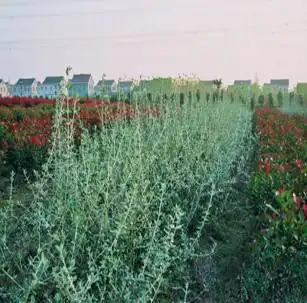
59. Vitex agnus-castus
Vitex agnus-castus is a fragrant shrub of the Verbenaceae family in the order Lamiales . It can grow up to 5 meters ( about 16 feet ) tall . Its flowers are rose-red to lavender , clustered in spikes. Its twigs are soft and can be used to weave baskets. Its fruits are red and used for seasoning. Its leaves are 5 to 7 lobed, and its back and branches are covered with white felt-like hairs. It is native to Eurasia and has been successfully introduced to North America.
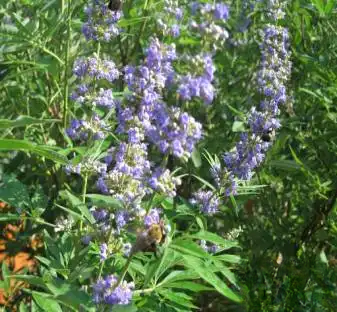
60. Caryopteris
Plant morphology : Also known as orchid grass, mountain mint. Perennial herb, 35 to 90 cm tall. Small branches with downward white soft hairs. Single leaves opposite; petiole 3 to 4 mm long. Blue-purple flowers, solitary in leaf axils; slender pedicel, with a pair of short linear bracts in the middle and upper part; calyx with short tube, short soft hairs and golden yellow fine glandular dots, 5- lobed, lobes ovate; corolla 4- lobed. Entire; 4 spatulate stamens , 2 strong; 1 pistil , slender, smooth, 2- lobed at the top, ovary superior, densely covered with short soft hairs. Capsule, with long stiff hairs. Flowering period is April .
Living habits: Born in mountains and roadsides. Distributed in Anhui, Jiangsu, Zhejiang, Jiangxi and other places. Likes light, cold-resistant, drought-resistant, and tolerant to poor soil.
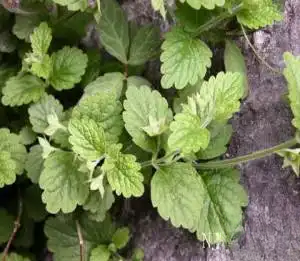
61. American Forsythia
Morphological characteristics : Forsythia suspensa. Deciduous shrub. Arched branches, lamellar pith, oblong to ovate-lanceolate leaves, sometimes 3- lobed or 3- lobed. Strong sun-loving species, drought-tolerant. Suitable for planting in deep soil.
It is a hybrid of Campanula and Forsythia suspensa. It has bright colors, dense flowers, a long flowering period, and strong cold resistance.
Oleaceae, Forsythia suspensa, a hybrid of Forsythia suspensa and Campanula odorata, a semi-evergreen flowering shrub, with characteristics between the two, arched branches, elliptical to lanceolate leaves, golden yellow flowers, blooming in dry spring, flowering period from March to April , vigorous growth, long green leaf period from March to January of the following year , a verdant landscape in late autumn and early winter. It is an American horticultural variety, resistant to pruning, strong adaptability, and can be vigorously promoted.
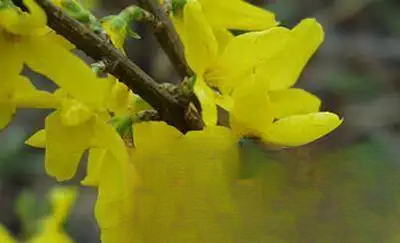
62. Silver Princess Xiaola
Ligustrum lucidum is an evergreen shrub of the Oleaceae family, about 1.5 to 1.8 meters tall; leaves are opposite, ovate-elliptical, with white spots on them; panicles are terminal, white, and bloom from June to July ; it likes light, is not picky about soil, grows fast, has strong germination ability, and tolerates pruning. Silver Princess Herba has beautiful leaves, grows vigorously, and is evergreen all year round, making it an excellent flower border configuration plant.
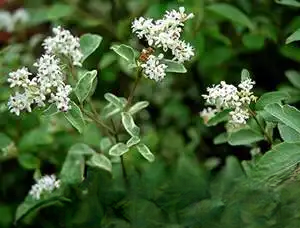
63. Fragrant Jasmine
Morphological characteristics: Evergreen shrub, branches and leaves are vine-like, pinnate leaves are alternate, with 5-7 leaflets, cymes, fragrant flowers, bright yellow, flowering period is May to June , fruiting period is October to November .
Habits and cultivation: likes light, tolerates partial shade, is cold-resistant and drought-resistant, is not picky about soil, requires fertile, moist and well-drained soil. Likes warm and humid climate, relatively cold-resistant, likes acidic soil, potted in Jiangnan, put into greenhouse in winter to prevent freezing and leaf shedding
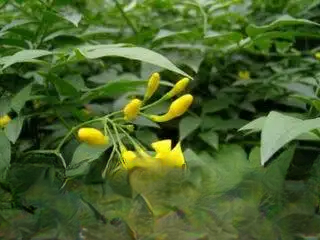
64. Cotoneaster serrata
Morphological characteristics : Evergreen low shrub. Branches spread out in two neat rows. Small, thick leathery leaves, nearly round or broadly elliptical, with acute apex, cuneate base, entire margin, sparsely covered with flat soft hairs on the back. Small, sessile flowers, solitary or 2 flowers growing side by side, pink. Flowering period May - June . Fruit nearly spherical, bright red. Fruiting period September - December .
Living habits: Cotoneaster likes a humid environment and is relatively drought-resistant . If the growing season is not too dry , it can basically grow naturally , but it should be watered with thawing water and freezing water in early spring and early winter.
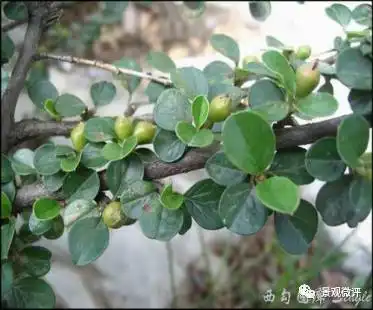
65. Mediterranean Viburnum
Growth habit: Mediterranean Viburnum is easy to differentiate flower buds, and one- or two-year-old saplings often bloom. If the vegetative growth is properly controlled, it can also bloom in summer or autumn, and if planted in groups, flowering plants can often be seen throughout the year.
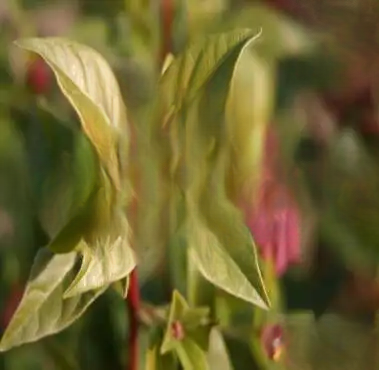
66. Sambucus sambucus
Growth habit: It is a deciduous shrub of the genus Sambucus in the family Caprifoliaceae . It is golden with green spots and blooms from May to June . It likes light, tolerates shade, cold and drought. It grows vigorously and avoids waterlogging. It is suitable for planting on lawns near water and forest edges.
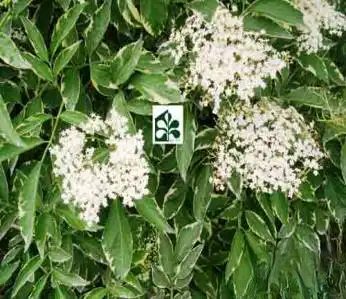
67. Abelia grandiflora
Characteristics : It likes light, is heat-resistant, and can withstand low temperatures of -10℃ . It can safely overwinter even if planted in the open field in Nanjing, and has strong adaptability to soil. It has strong branching is resistant to pruning. It needs to be pruned more during the growing season and early spring to prevent the branches and leaves from being bare, so as to maintain a full tree shape ...
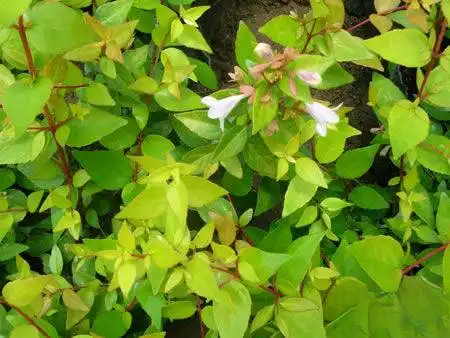
68. Hairy tree
Botanical characteristics : " Maohemu " is a deciduous shrub of the genus Maohemu in the family Caprifoliaceae. The tree height can reach 1.5~2.0 meters, with dense and soft arched branches. In Shanghai, it usually sprouts in early March and leaves fall in early December . The leaves are oval, small and dense. The flowering period is from July to August . The flowers are small and the color is light pink. After the flowers wither, round berries are formed, which grow in clusters on long branches. In late autumn, the fruits turn red, which are very beautiful and have high ornamental value. The fruits are borne until early spring of the following year. The entire fruit-bearing period is up to four months.
Growth habits: " Halowood " has strong adaptability, is cold-resistant, heat-resistant, moisture-resistant, and barren-resistant, has very few diseases and pests, has a strong ability to sprout branches, and after the branches hang down to the ground, they can take root and grow in the internodes.
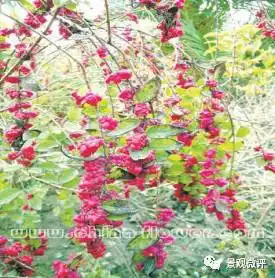
69. Creeping Bright Green Honeysuckle
Its main characteristics are evergreen, bright green leaves, vigorous growth, strong germination, dense branches, and extreme tolerance to pruning; strong cold resistance, able to withstand low temperatures of -20 °C , and high temperatures; insensitive to light, growing well under full light, and also tolerant to shade; not demanding on soil, able to adapt to acidic soil, neutral soil, and light saline-alkali soil. With all these advantages, creeping bright-leaved honeysuckle has become a leader among creeping woody ground cover plants.
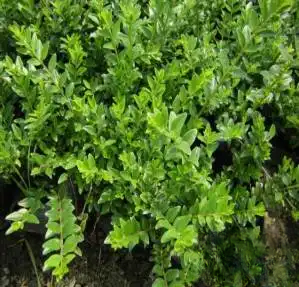
70. Snowball Ice Deutzia
Morphological characteristics:
The plant is 0.4 to 0.6 meters tall, with a crown width of 1.0 to 1.2 meters. It is hemispherical, with dense and soft branches. The leaves are single, opposite, lanceolate, bright green, and turn red in autumn. The flowering period is from April to May , with panicles, small white, star-shaped flowers, and extremely lush. Because the whole plant is densely covered with white flowers when it blooms, it is called " snowball " .
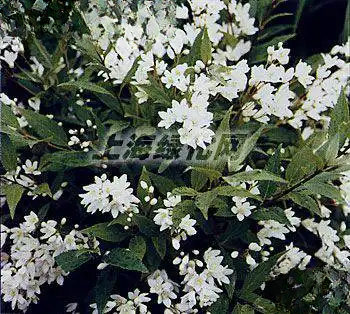
71. Colorful-leaved Salix babylonica
Morphological characteristics : Deciduous shrub, 1-3 meters high, with a wide crown and new leaves with milky white and pink spots.
Growth habits : light-loving, cold-resistant, moisture-resistant, strong growth potential, requires strong pruning in late winter.
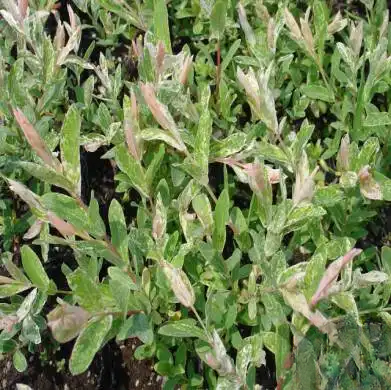
72. Creeping pot grass
Plant morphology : Perennial fleshy herb, sterile branches creeping roots, strong branches erect, 10 to 20cm long . Leaves are arranged in whorls of 3 , oblanceolate to oblong, 15 to 25mm long , 3 to 5mm wide , pointed at the apex, gradually narrowed at the base, and entire. The cymes are loose, often 3 to 5 branches; the flowers are light yellow and sessile; the sepals are 5 , broadly lanceolate to oblong, 3.5 to 5mm long , slightly obtuse at the apex; the petals are 5 , lanceolate to oblong, 5 to 8mm long , with long pointed tips on the outside of the apex; the stamens are 10 , shorter than the petals; the carpels are 5 , slightly spreading. The seeds are small, oval, wingless, and have papillary protrusions on the surface. The flowering period is May to June , and the fruiting period is July to August . It grows on rocks on hillsides or is cultivated. Distribution in the north and south
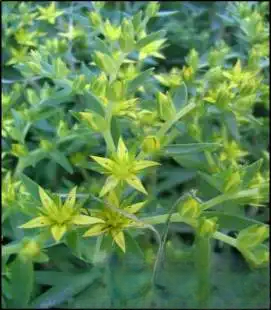
73. German Sedum
Morphological characteristics : Perennial succulent plant, potted height 40 to 50 cm. With nodes, slightly covered with white powder, thick and light green stems. Leaves are gray-green, ovate or oval, flat and fleshy, and the upper edge of the leaves sometimes has slightly wavy teeth.
Habit characteristics : likes sufficient sunlight, warm, dry and ventilated environment, avoids water and humidity, and is not strict on soil. It is relatively cold-resistant and drought-resistant.
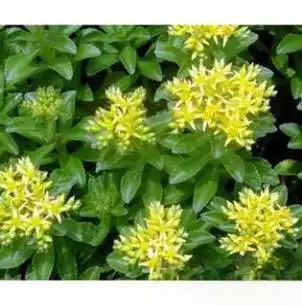
74. Sedum
Growth habit : Sedum is a succulent plant with a very high water content. The cuticle of its leaves and stems has an extraordinary ability to prevent water evaporation, so it does not need to be watered even on a dry roof in summer. It can tolerate drought for up to 1 month, while other weeds planted with Sedum have already dried up and died , but Sedum is safe and sound , maintaining its vibrant green color.
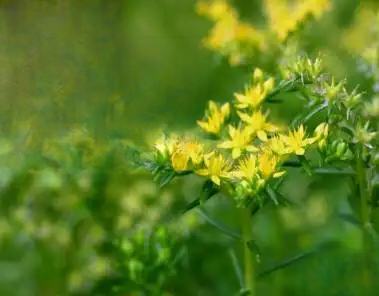
75. Sedum rotundifolium
Biological characteristics : A perennial evergreen plant of the family Celastraceae. Stems are oblique or drooping, thin and round, and fleshy. Leaves are opposite, with rounded to rounded leaves, slightly wavy leaf margins, green with red, especially old leaves are dark purple, petioles are very short, capitula are hemispherical, growing at the top of the stem, and small flowers are pink.
Living habits : likes cool, humid and semi-shaded environment, strong cold resistance, not resistant to high temperature and sunlight in summer. Requires loose and fertile sandy loam.
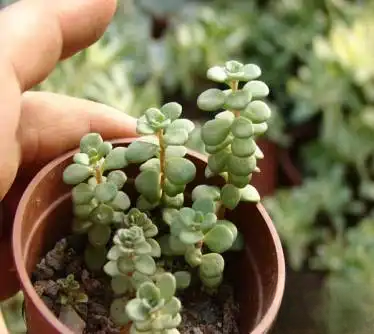
76. Sedum chinense
It is evergreen, with green leaves, blooms from May to June , and is light-loving. It is suitable for ground covers, roofs, flower borders, etc.
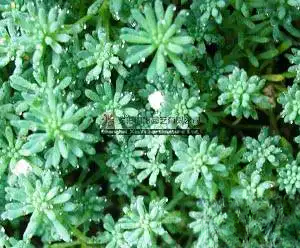
77. Red Ice Flower
Growth habit: The stem is elongated and creeping or climbing. It likes cool weather and avoids high temperature and humidity. It is drought-tolerant and likes plenty of sunlight. It prefers fertile and well-drained sandy loam.
Basic characteristics: perennial succulent herb or subshrub
Landscape application: The leaves are cylindrical, thick and fleshy. It blooms in spring, with a deep pink corolla. When in full bloom, it is gorgeous and spectacular. It is most suitable for planting on the stone walls and slopes of the courtyard to form a good ground landscape. It is also suitable for potted plants.
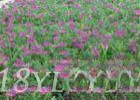
78. Jade belt grass
Morphological characteristics: The root is thick and knotty. The culm is 1 to 3 meters high , and the stem is thick and almost woody. The leaf width is 1 to 3.5 cm. The panicle is 10 to 40 cm long , and the spikelet usually contains 4 to 7 small flowers. The inflorescence is shaped like a broom. The leaves are alternate , arranged in two rows , drooping , and have white stripes. The aboveground stem is straight , with internodes , and resembles bamboo.
Growth habits: Usually grows beside rivers, ponds, and lakes , often growing in large areas to form reed marshes. Likes warmth and light , is resistant to moisture and cold. Needs protection over the winter in the north. Cultivation and management are very extensive , can be planted in the open field or potted for viewing , pay attention to weeding and maintaining humidity during the growing period. No special maintenance is required.
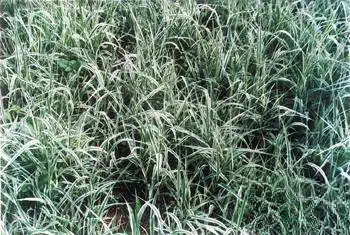
79. Variety Pennisetum
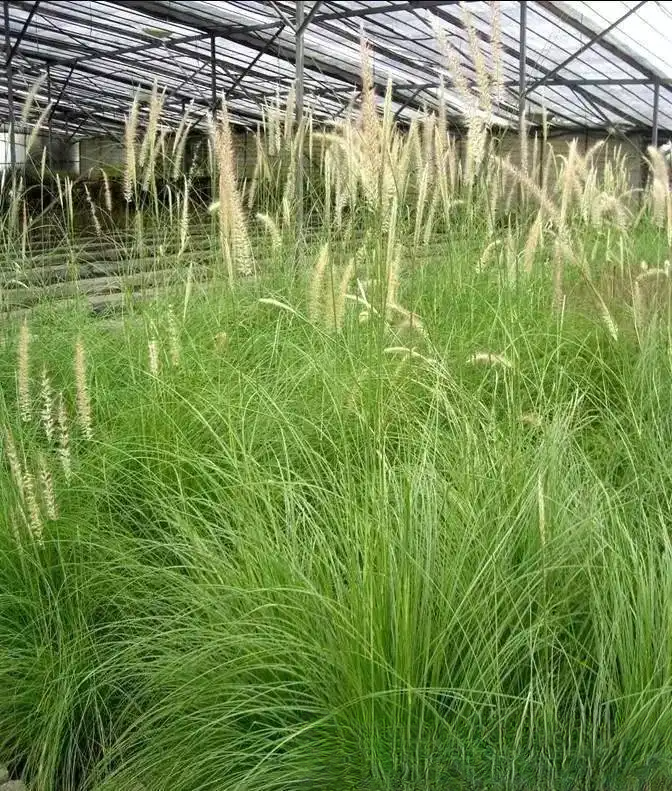
80. Spotted awn
Morphological characteristics: Variegated Miscanthus is a special group of variegated Miscanthus. Their stripes are transverse to the leaves, not longitudinal stripes. The earliest variety of variegated Miscanthus is M. s . 'Zebrinus' , which forms loose arched clusters up to 2.4 meters high . If it grows for a long time, it can also form a crown width of several meters. The formation of spots is affected by temperature. In early spring, when the temperature is low, there are often no spots. When the temperature is too high, the spots will weaken and even turn yellow. You should pay attention when using it. Some varieties are successfully cultivated on the basis of M. s . 'Zebrinus' . M. s'Strictus' has a dense cluster and expands outward very slowly. Even if it grows for ten years, its diameter usually does not exceed 75 cm. The stems grow so densely together that a card cannot be inserted near the ground. This variety is 1.8 meters tall . Some dwarf varieties such as 'KirkAlexander' , 'TigerCub' , 'Hinjo' , 'CoonTail' range in height from 75 cm to 150 cm.
Growth habits: light-loving, tolerant to partial shade, strong and resistant.
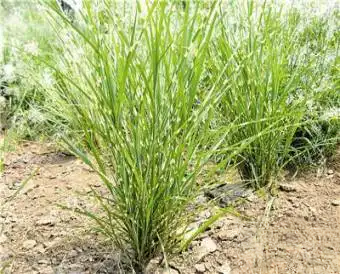
81. Tian Mang
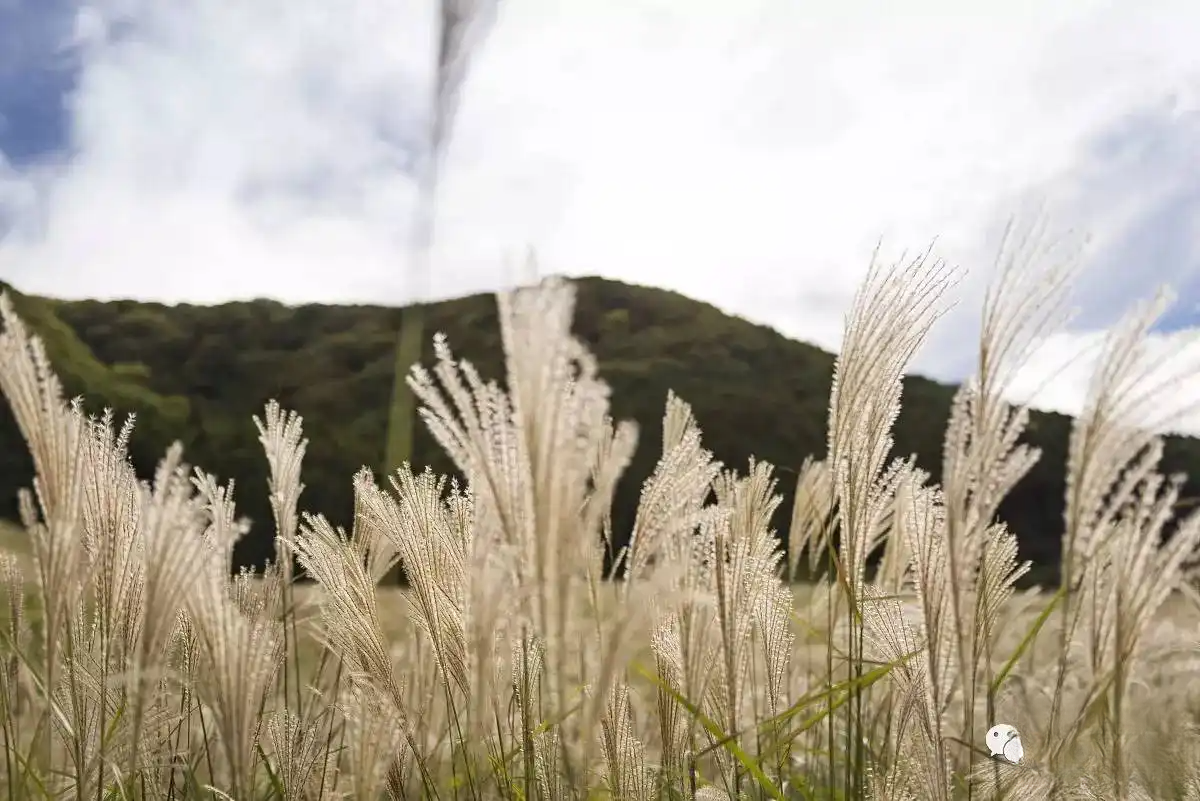
82. Miscanthus sinensis
Morphological characteristics: The flower color is initially red, turning to silvery white in autumn, September - October .
Growth habits: Tolerant to partial shade, drought, waterlogging , dryness and humidity. No diseases or insect pests. The above-ground part dies in winter.
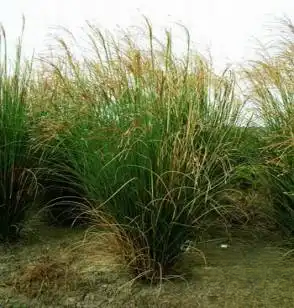
83. Silver Edged Mango
Characteristics: Plant height 60-100 cm, leaves with white vertical stripes, light-loving, semi-shade-tolerant, cold-resistant, drought-tolerant
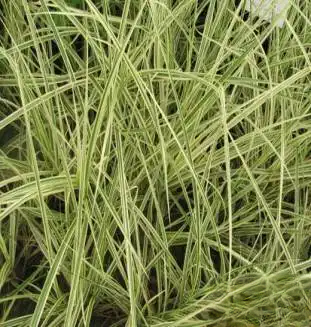
84. Dwarf Pampas Grass
Ecological habits: Evergreen perennial herb, plant height 120cm , leaves clustered at the base, long and narrow, with fine teeth on the edges, large panicles, feather-like, silvery white. It likes light, is cold-resistant, and requires well-drained soil. It is a famous ornamental grass abroad. It is used for landscaping or banks.
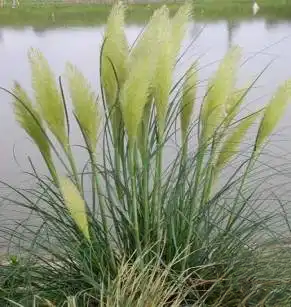
85. Pampas grass
Morphological characteristics: Stems are clustered, dioecious, leaves are mostly clustered at the base, very narrow, about 1m long , about 2cm wide , drooping, with fine teeth on the edge, gray-green, and covered with short hairs. The panicle is large, the female spike is silvery white, shiny, and the spikelet axis is densely covered with silky hairs. The spikelet consists of 2-3 flowers. The male spike is wide and tower-shaped, sparse and weak. The flowering period is September-October .
Growth habits: Dwarf pampas grass is strong and cold-resistant, and prefers a warm, sunny and humid climate.
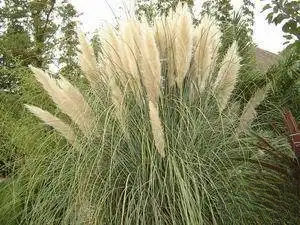
86. Stipa tenuifolia
Ecological characteristics: Stipa tenuifolia is a medium-drought grass, a typical grassland plant. Its ecological range is relatively narrow, and it generally grows on steep sunny slopes of mountains at an altitude of 1200-1700m . The soil is dark chestnut soil, with thick surface organic matter and strong water retention. Stipa tenuifolia is not drought-resistant. With its thin stalks, curled leaves and short growth period, it quickly completes its life cycle in early summer to adapt to the dry climate outside. Stipa tenuifolia has a short growth period, turning green in mid- April , heading in mid- May , and maturing in mid- June . The leaves remain green after the seeds mature.
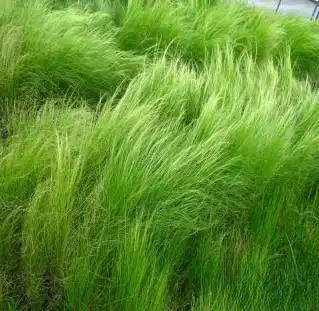
87. Carex chrysantha
Morphological characteristics: Perennial herb, plant height 20 cm, striped leaves, green edges on both sides of the leaves, yellow in the center, spike inflorescence, flowering period April-May .
Growth habits: likes light, tolerates partial shade, is not tolerant to waterlogging, and has strong adaptability.
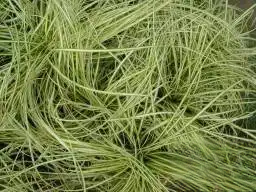
88. Blue moss
Evergreen , blue-gray leaves , recommended planting density : 25 plants /square meter .
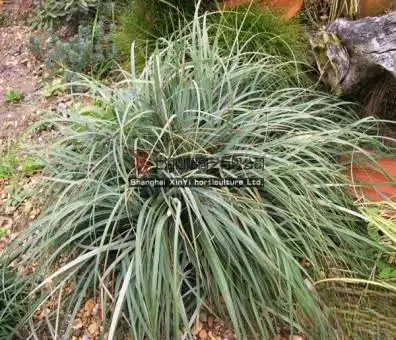
89. Carex fasciata
Characteristics: Evergreen, perennial herb, with strip-shaped, dark green, shiny leaves and spike-shaped inflorescence; likes light and moisture, often grows in streams, relatively cold-resistant. Can be used as an evergreen aquatic plant.
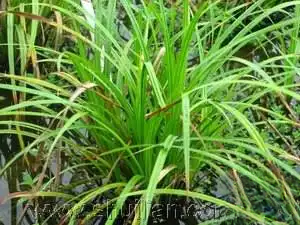
90. Japanese Blood Grass
Ecological habits : Perennial, dormant in winter; leaves are clustered, sword-shaped, often maintain deep blood red, panicle inflorescence, spikelets are silvery white, flowering in late summer. Likes light or dappled light. Heat-resistant, likes moist and well-drained soil. Excellent colorful ornamental grass.
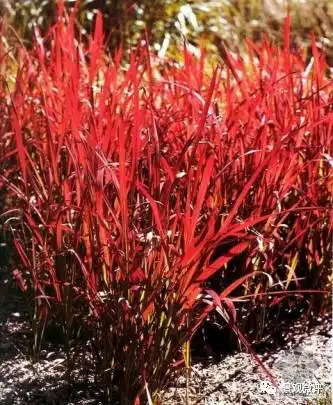
【 Yifeng Project Class】Follow and do real landscape projects
Endless shadowing and learning | Service-oriented teaching guidance